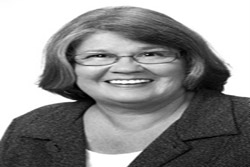To commemorate Culver City’s Centennial, long-time resident and historian, Julie Lugo Cerra, has compiled one hundred years of the town’s history in a full-color, 216 page book which will be available to the public Tuesday, Sept. 20.
Lugo Cerra will be signing copies of her book at Westfield Culver City Tuesday, Sept. 20 in the Center Court, from 5-7 p.m., where attendees may enjoy live music and purchase the commemorative edition of Culver City’s history.
“We tried to make [the book] as interesting as possible and use as much as we could because that’s the way you put history into people’s hands,” Lugo Cerra said. “They are not going to come in and see all of this in the archival space. But this is a way you get it out to the people [who] love the history–because we have such an interesting history.”
Replete with panoramic photos, rare, archival documents and articles, as well as a detailed timeline, “[Lugo believes] it is important to try and give people an easy opportunity for research,” she said.
A veritable well of knowledge, as her father Charles Reyes-Lugo was born “on Lugo Ranch here before it was a city,” Lugo Cerra’s ties are strong in this small town, “which is why history is something that became important to us,” she said.
A retired police chief, Reyes-Lugo and Lugo Cerra were “founding members of the Historical Society, and [Reyes-Lugo] was a wonderful help because he knew the lay of the land, he knew everybody in town. He could talk to you about local landmarks,” she said. “It was a real working relationship that was fruitful.”
Though she has had to do a lot of digging to unearth fragments of Culver City’s rich past, Lugo Cerra tells us that: “Culver City is not that old. The history here is still pretty accessible from the beginning because you have city records that you can actually look at.”
Since the Historical Society’s inception in the late ‘70s, Lugo Cerra and other members have arranged Culver City tours, have placed bronze plaques denoting thirteen different landmarks, have managed to archive several pieces of Culver’s City’s past, and continue to meet regularly in their official congregation-space in the back area of Veteran’s Park.
“There is nothing like coming home at night and seeing people walking past one of those markers and standing there reading it,” she said. “This is painless education at its best, so we know we’re doing the right thing.”
Having watched the city progress into what it is now, Lugo Cerra reflects on her youth, where she: “rode bikes down the alleys, [and] had fun. My mother watched me across the street so I could go walk over to [her friend] Patty’s house.”
A local resident most of her life, Lugo Cerra has worked on studio lots, has worked for the city and has a bevy of information at her disposal, “it is all of these things that turned me into an accidental historian,” she said.
“Culver City is like an oasis within the urban metropolis,” she said. “The intention was for this to be a place where people could live and work comfortably.”
Having raised her daughter Michelle, along with her late husband Sam Cerra, Lugo Cerra may be a poster-child for the sort of lifestyle Harry Culver envisioned for his residents: “Culver made his plans to have the balance so you could have a place for families to live and a place for people to work,” she said.
A hundred years in the making, Lugo Cerra tells us: “Culver City has successfully re-invented itself, basically the way Culver planned it. To make sure that it had all of the amenities for families and good recreational facilities, places for kids to play.”
In keeping with the city’s progression, though, “[the city] changes just enough so that the economy of the city continues to maintain itself,” she said.
As for Lugo Cerra, besides attending to her family, working and keeping an eye out for gems in the archives: “[she’s] just concentrating on having more fun with writing books and writing articles,” she said.
Interested individuals may visit www.culvercityhistoricalsociety.org for updates on historical landmarks, meetings or any new information that arises.
“People really enjoy having a sense of history,” she said. “Especially about a small town like Culver City. There is a lot to be learned.”














